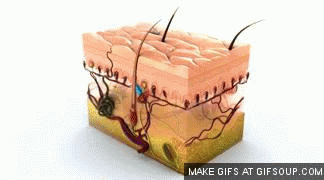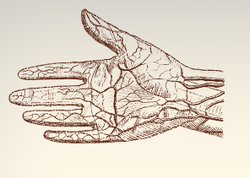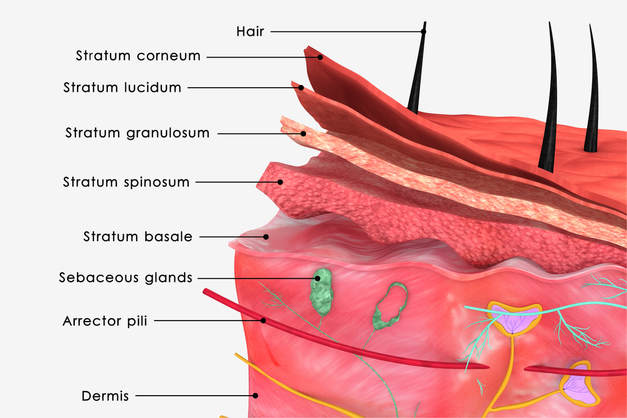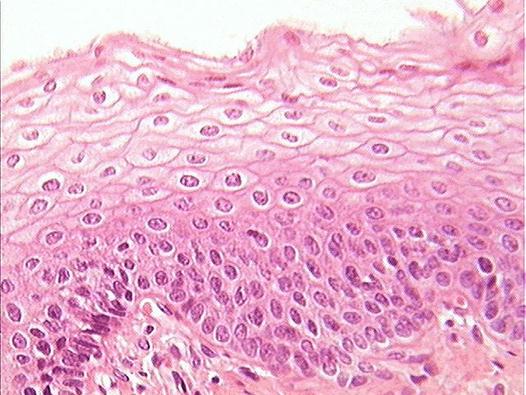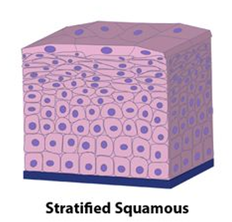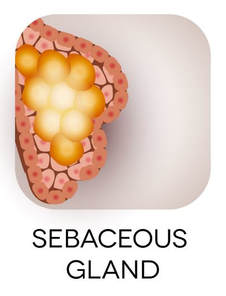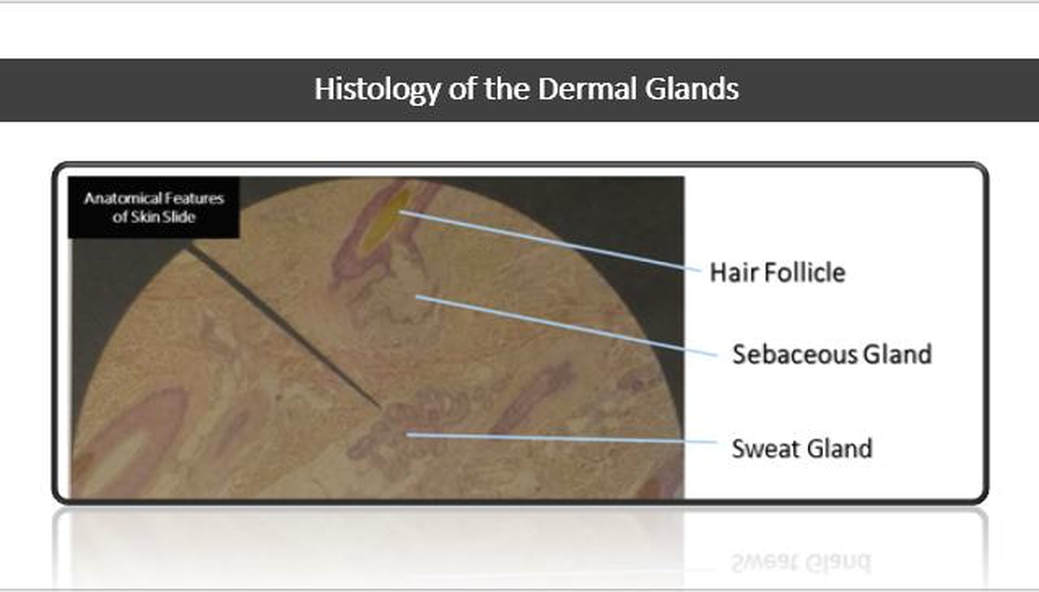The Integumentary System
The Layers of the Skin
The skin is composed of 2 primary layers:
1) the epidermis and 2) the dermis
1) the epidermis and 2) the dermis
The apical (outer most) layer is called the epidermis. The prefix "epi-" means "above". Lying underneath the epidermis is the dermis. Each of these primary layers is broken down into subsequent layers.
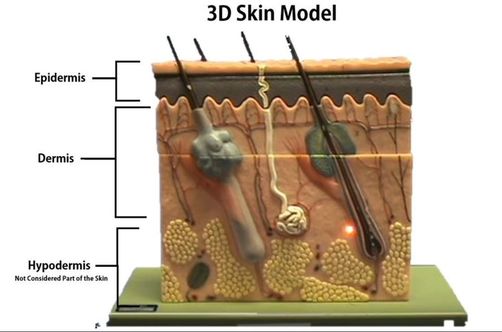
The skin is composed of the epidermis and the dermis. The outermost surface of your skin (the superficial region) is made of a thick epithelial tissue called epidermis. The word "derm" means "skin". The prefix "epi-" means "above". Epidermal tissue is categorized as a keratinized stratified squamous epithelial tissue. Beneath the epidermis, (deep to the epidermis) is the layer of the dermis. The dermis is composed of connective tissue. Below the skin (deep to the skin) there is another layer called the hypodermis. "Hypo-" means "below". This layer is composed of areolar connective tissue and adipose tissue. The hypodermis is NOT considered to be part of the skin itself.
Thick Skin and Thin Skin
|
|
The epithelium of thick skin contains 5 epidermal layers, whereas thin skin contains only 4 layers.
The epidermal layers of thick skin starting from the most superficial layer are the 1) stratum corneum 2) the stratum lucidum 3) the statum granulosum 4) the stratum spinosum 5) the stratum basale. You can easily remember the layers of the epidermis using the acronym: Come, Let's Get Sun-Burned! |
Thin skin contains the same layers, except for the stratum lucidum, which is missing.
Functions of the Integumentary System
Protection
|
The primary function of your skin is to provide a physical protective barrier against harmful environmental elements, dehydration and physical forces. The epithelium allows your internal organs and soft tissues to be somewhat shielded from the outside world. It provides a barrier that is able to withstand some wear and tear. It can get bumped, bruised or scraped and it is able to heal relatively quickly.
|
This is because the epidermis is composed of keratinized stratified squamous epithelial tissue which provides layers of small, squamous cells which are rapidly and easily replaced. The barrier of your skin also protects you from harmful elements like bacteria, viruses, chemicals and even ultraviolet radiation (UV radiation) from the sun. The UV protection of the epidermis comes from the presence of melanin produced in specialized cells called melanocytes.
|
YOU SHALL NOT PASS!
Epithelial tissue is selectively permeable, allowing only certain substances to enter the body at any time. The skin is our first line of defense against harmful elements in our environment, such as disease-causing microbes, reactive substances and irritants. Your skin functions to prevent excess water loss from the body. |
Body Temperature Regulation

The integumentary system plays a significant role in maintaining homeostasis. The dermis of the skin contains a vast network of blood vessels that are under the control of the nervous system. When your body gets cold, your nervous system will constrict these blood vessels, thereby restricting the blood flow to your extremities, as well as to the outer surfaces of your body, in an effort to keep the blood warm. The sweat glands are also activated by the nervous system and secrete sweat in response to heat. When the sweat reaches the surface of the skin, the skin is cooled as the sweat droplet evaporates.
Metabolic Functions
|
Skin cells also play a role in some chemical conversions. Vitamin D is a steroid that gets converted into calcitriol in the body, Calcitriol is a hormone that assists in the metabolism of calcium. This is why you will sometimes see "with vitamin D" marked on products containing calcium. Vitamin D is made using a substance called "a precursor" that is synthesized from cholesterol by epidermal cells.
Cutaneous Sensations Our epithelium is our interface will the outside world. Our physical sensation of touch, pressure, pain and temperature all come from specialized sensory receptor cells in our epithelium. Our skin gathers sensory information about the outside world that gets relayed to the brain. Your skin has sensory receptors for temperature, touch and pain.
|
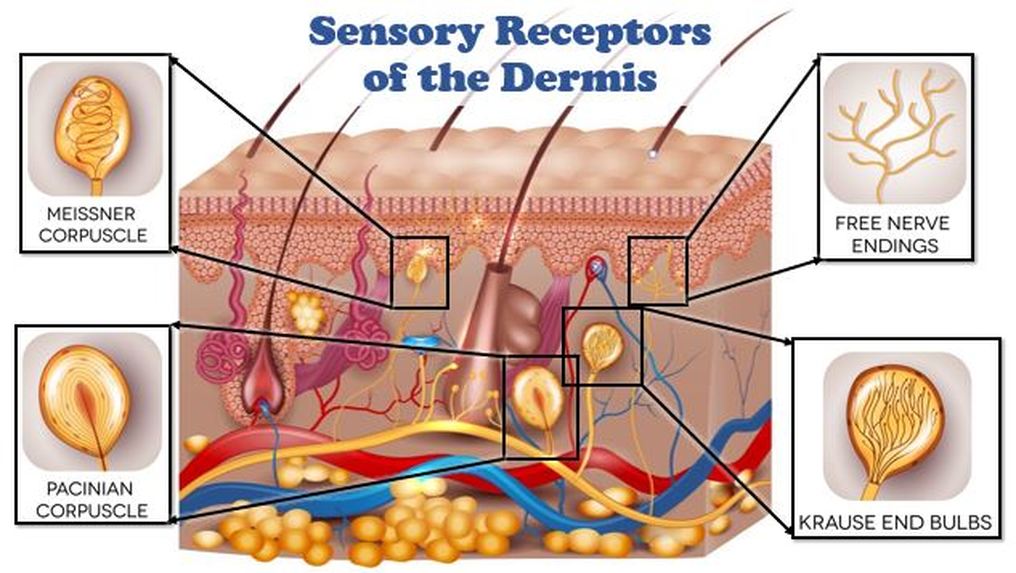
|
|
Glandular Epithelium Epithelial cells that produce secretions are called gland cells or glandular epithelial cells. Like any good cell, the gland cells will come together to form glandular epithelial tissues.
|

